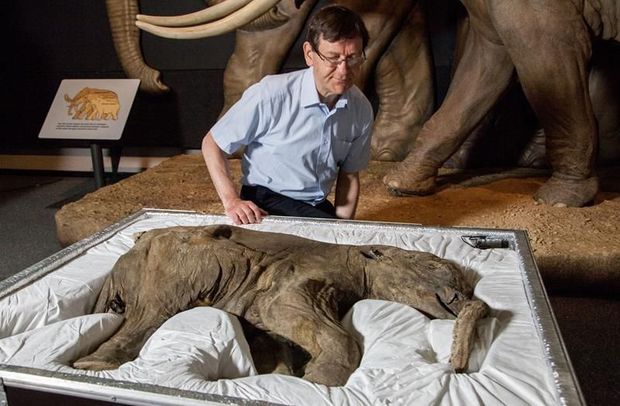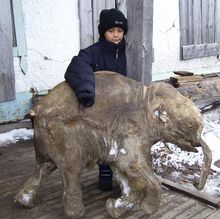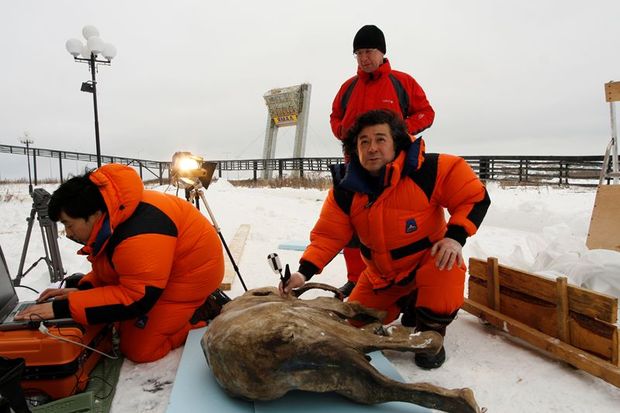
Professor Adrian Lister unveiling Lyuba © NHM, London.
Professor Adrian Lister says to be able to look an extinct animal in the eye is the most extraordinary experience. He's recently been one of the lucky few to examine first hand the most preserved mammoth ever found – a 42-thousand-year-old carcass of a baby woolly mammoth. Unlike most mammoth remains, Lyuba, whose trunk was perfectly preserved, has taught scientists a great deal about the mammals.
Professor Lister is one of the world's foremost experts on mammoths – he specialises in vertebrates and anthropology palaeobiology at the Natural History Museum in London.

Pictured: Lyuba was discovered by reindeer herder Yuri Khudi and his sons along along the frozen Yuribei River in May 2007. Lyuba after discovery © Shemanovsky Museum - Exhibition Complex.
The museum has just opened an exhibition devoted to the ice age giants, including the most complete woolly mammoth ever found. Lyuba was found in 2007 on the Yamal peninsula in northwestern Siberia where she had been perfectly preserved in ice for more than 40 thousand years.
Scans have revealed that Lyuba's trunk was filled with mud, indicating she sank into a mudpool which froze and preserved her body.
As she was so perfectly preserved, researchers were also able to examine her stomach contents, finding a congealed, brownish-white substance that turned out to be her mother's milk.
They were also able to see, for the first time, two flaps of skin that run the length of the trunk. Professor Lister believes these may have been used for scooping up snow to get water.

After the discovery, Lyuba was sent to the Shemanovsky Museum - Exhibition Complex in Salekhard, Russia. Lyuba discovery © Shemanovsky Museum - Exhibition Complex.
Early in his career, Professor Lister worked on the most significant mammoth find in Britain. An adult and several juveniles were found together at Condover in Shropshire, and dating their bones proved that mammoths had survived in Britain much longer than previously believed.
He continues to study mammoths and other ice age mammals from their fossils using new techniques like isotopic signatures, ancient DNA sequencing and CT scanning, which means we can now know what mammoths ate, the colour of their hair and how they adapted to changing climates.
But he believes there are too many technical and ethical hurdles in the way of actually cloning a mammoth.

